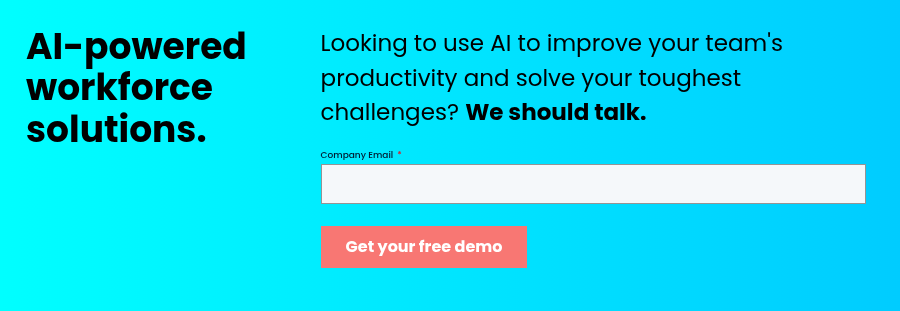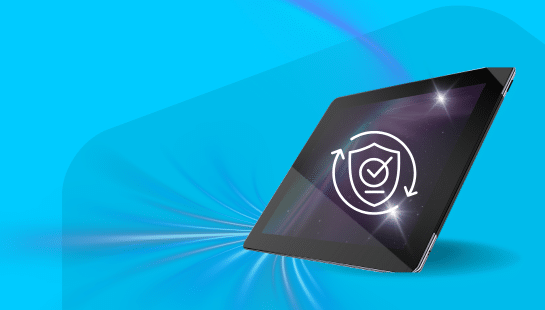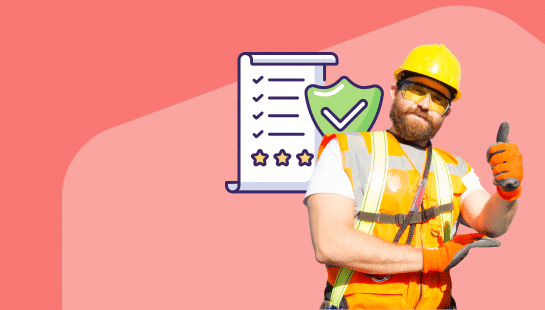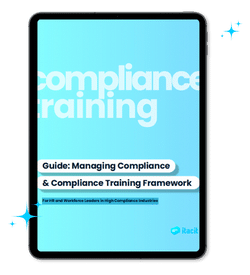AI capabilities are transforming workplace communication and team interactions. Studies show these tools can automate 60-70% of the time employees spend on routine tasks. Most professionals dedicate several hours each day to emails, meetings and colleague interactions. This time quickly adds up, but AI provides a practical solution.
Smart AI tools now make use of information about employee productivity and satisfaction levels. Your team can work faster as these technologies handle time-consuming manual tasks. Natural language processing algorithms power chatbots that assist staff members and respond to their questions. The technology even analyzes speech patterns to detect frustration and suggests adjustments to pace or tone during conversations.
These AI tools are exactly that, tools. They help create efficient communication while preserving human connection. This piece shows you practical ways to use AI in workplace communications, from meeting assistants to instant translation. Each feature helps make your team’s interactions clearer, more productive and impactful.
The shift in workplace communication
Workplace communication has changed in the last decade. Teams no longer rely on formal memos and lengthy email chains. They want quicker and better ways to connect. British Council research shows teams are quick to abandon traditional channels in favor of modern communication tools.
From emails to instant messaging
Email remains the top internal communication method (97% of internal communications teams use it), but instant messaging is catching up fast. This change reflects our personal communication style – quick, casual, and immediate.
Team members both on-site and remote now depend on instant messaging platforms to get work done. To name just one example, see Slack, which has become the go-to platform for many organizations. Almost 80% of Fortune 100 companies use it, with users in 150+ countries sending over 4.7 billion messages each week.
The advantages are obvious. Team members get answers right away instead of waiting for email responses. Salesforce’s FY24 Customer Success Metrics show Slack makes employees 36% more productive on average. Another survey revealed that 21% of employees saw major productivity gains from instant messaging. The main benefits included fewer calls and emails (75%) and faster answers to questions (66%).
These changes happen because:
- Teams need to collaborate in real-time
- Employees prefer casual communication
- Quick decisions need immediate feedback
- Email overload has become too much
One employee put it simply: “It’s much like striking up a conversation at the watercooler or quickly asking a co-worker a question in passing”.
The rise of remote and hybrid teams
Today’s workplace looks completely different. About 28% of employees work on hybrid schedules and 13% work fully remote. Upwork predicts that 22% of American workers will work remotely by 2025.
The pandemic sped up this change. Americans used to spend 5% of their time working from home, according to The Economist. This number jumped to 60% by mid-2020. Recent Gallup data shows 54% of remote-capable U.S. workers now work in hybrid settings, 27% work exclusively remote, and only 20% work fully on-site.
New work arrangements bring unique challenges. McKinsey research suggests employers should invest in technology that connects remote and on-site colleagues. They should avoid too many video calls, which can tire people out, especially introverts.
Technology tools shape how people understand and interact with your company when there’s no physical office.
Why AI is now essential
AI has become crucial as communication patterns and team structures evolve. It helps solve communication problems and makes exchanges better and more customized.
AI tools support teams through:
- Real-time translation for global teams
- Automated meeting transcription
- Sentiment analysis in employee feedback
- Smart scheduling and reminders
These technologies help bridge language gaps, analyze sentiment, and learn about communication patterns. AI-powered translation tools let multilingual teams work better by translating conversations, emails, and documents instantly.
AI also helps bring communication together across platforms. Microsoft Viva Insights helps employees streamline their communication by syncing updates across multiple platforms. This reduces the need to switch between different apps. This feature becomes more valuable as workplace communication gets shorter and more direct, people express their needs quickly and focus on key details.
AI tools that streamline communication
AI tools have become essential in modern workplaces. They cut through communication clutter and increase efficiency. These technologies handle routine tasks, save time, and help team members work together smoothly whatever their location.
Chatbots for quick responses
AI-powered chatbots act as virtual assistants that give immediate answers to common questions which could disrupt your workflow. These digital helpers provide 24/7 support to employees in different time zones, making them a great way to get support for global teams.
Chatbots manage many routine questions that once took up HR professionals’ time:
- Password resets and account unlocks (solving 80% of common IT support questions)
- Leave requests and payroll questions
- Benefits information and policy clarifications
Your HR team can focus on important initiatives instead of repetitive tasks when chatbots automate these frequent requests. Gmail’s Smart Reply analyzes incoming messages and suggests appropriate responses, which significantly reduces response time.
Chatbots also help new employees through onboarding processes, from paperwork completion to understanding company culture. Research shows 62% of employees prefer using chatbots for HR-related tasks, which shows their growing acceptance at work.
AI-powered meeting assistants
AI meeting assistants solve the common problem of forgetting meeting decisions. They record, transcribe, and analyze your conversations automatically. These tools combine smoothly with platforms like Zoom, Google Meet, and Microsoft Teams to improve your meeting experience.
AI assistants capture meeting content and:
- Create short summaries of key discussion points
- Pull out and assign action items automatically
- Make searchable transcripts for later use
- Study speaking patterns and participation levels
Fireflies.ai delivers 95% accurate transcription in over 100 languages with speaker recognition, which makes meetings more available for global teams. Otter.ai users save more than four hours each week through automated transcription and summarization.
Advanced meeting assistants go beyond simple transcription by providing analytics on speaking time, monologs, and meeting effectiveness. Equal Time measures meetings’ inclusion score and shows how well speaking time spreads among participants. Teams use these insights to improve their communication habits.
Smart scheduling and reminders
Smart scheduling tools eliminate the constant email exchanges needed to find meeting times. These AI systems look at everyone’s schedule and find times that work for all participants.
These tools do more than arrange meetings, they optimize your entire workday. They organize tasks based on deadlines and priorities, which prevents double-booking and overcommitment. You stay in control of your calendar instead of letting it control you.
Smart scheduling tools adapt in real-time, which sets them apart. The system automatically adjusts schedules when project deadlines change or team members become unavailable. This flexibility helps especially in ever-changing work environments where plans often change.
Data-driven decisions help maximize efficiency. These systems analyze availability, workload, and urgency to make smart scheduling choices. Tactiq schedules meetings and provides live transcriptions during calls while generating action items afterward.
Other platforms centralise all these AI communication tools. They support AI-enhanced communication while maintaining data privacy and compliance standards. Teams get a unified experience across multiple communication channels, which reduces the mental effort of switching between different apps.
Improving clarity and tone with AI
Teams need clear and effective communication to be productive, and AI tools now take this skill to new heights. Forbes research shows that poor communication affects 89% of the workforce negatively. Professional exchanges need more precision than ever before.
Grammar and tone checkers
Professional communicators now rely heavily on AI-powered writing assistants. These tools do much more than check spelling – they evaluate tone, clarity, and how well the message works.
Grammarly lets users write without mistakes and feel confident through features that make project proposals more convincing and Slack messages more urgent. Organizations save around $5,000 per employee each year by using its sentence rewrites, tone adjustments, and brand consistency options.
Wordtune offers advanced AI proofreading that spots grammar mistakes and suggests better ways to say things. Its standout feature helps users write like native English speakers through AI translation. This helps whether you send casual emails or work on specialized tasks like academic papers or business writing.
LanguageTool spots punctuation errors and tells you which commas you must use. The tool finds overused phrases, extra words, and wrong word choices to keep your writing professional. You can also use its AI to make sentences simpler, shorter, or more formal.
Real-time feedback on speech
AI now helps you speak better in professional settings, not just write better.
Yoodli, Zoom’s AI meeting coach, watches your speaking patterns during calls or practice sessions. It catches filler words like “um” or “uh” and weak phrases like “I think,” “just,” or “maybe” that make you lose control. The tool measures if you talk too much or too little during conversations.
Orai works as your pocket AI speech coach and gives instant feedback on how you speak. The app finds filler words, checks your speed and clarity, and rates your confidence. Best of all, it creates exercises just for you to fix specific speaking problems.
Poised watches your virtual meetings and scores your confidence and energy while tracking how much you listen versus talk. After each meeting, you get a summary of your speaking habits to see how you improve.
Avoiding miscommunication
Workplace miscommunication happens when people don’t understand what others say. AI tools help fix this problem in several ways.
AI writing assistants stop people from misreading the tone in written messages. Job satisfaction suffers for nearly 50% of employees because of poor communication. Managers can use AI to adjust their feedback emails so they don’t sound too harsh.
These tools also help create complete messages. Teams can communicate roles and responsibilities clearly when unclear expectations cause problems. This helps hybrid teams who often get confused about deadlines because of time zones.
AI brings all communication channels together. Teams miss messages when some people use email while others prefer chat. AI language tools create clearer, more detailed messages that work better. One manager found that asking AI to “make this sound more supportive while keeping all the information” turned difficult parent-teacher messages into helpful conversations. You only need an extra minute to get much better results.
Visualizing data for better understanding
Data visualization turns numbers into stories. The world has too much information but not enough attention. AI helps you make complex information easy to understand. Visual content receives 94% more views than text-only material. Your workplace communication needs this edge.
AI-generated dashboards
Smart dashboards have evolved beyond static displays into dynamic, interactive tools. AI systems look at your data, spot patterns, and create appealing charts. What used to take days now happens in minutes. Your organization saves precious time.
You can ask questions about your data in plain English with natural language processing. Type “What’s driving our sales growth?” and the AI creates relevant visualizations. Everyone in your organization can get insights, not just the tech experts.
Some platforms keep an eye on your data around the clock with features like “Watchtower.” This tool hunts for patterns and unusual activity. You can spot issues before they become big problems.
AI dashboards adapt to your organization’s different teams, which makes them special:
- Sales teams see revenue trends
- Operations tracks efficiency metrics
- Executives get the big-picture view
Each department gets exactly what they need without sorting through extra data.
Infographics and visual summaries
Teams now communicate complex information better with AI-powered infographic tools. These systems arrange text, images, and elements into balanced designs. You don’t need to search for the perfect template. Raw data becomes charts, graphs, and diagrams that people understand right away.
Interactive elements boost participation. People can hover their cursor over data points to see more details. Some tools add animation to static charts, which makes your audience more interested.
The technology might be complex, but using it isn’t. Piktochart’s AI lets you paste text or upload a document to create custom infographics quickly. Your team members can make professional visuals without special training.
Simplifying complex reports
People often skip reading long, text-heavy reports. AI finds important insights and suggests the right visual formats. The system studies your content and picks designs that people want to read and understand.
AI helps you understand big pictures too. Machine learning can process huge amounts of data and show connections, trends, and unusual patterns that you might miss. Your organization makes faster, better decisions.
The system processes information as it arrives. AI visualizations update by themselves, giving your team fresh insights automatically. Picture a dashboard that shows current sales figures, website visits, or social media feedback that updates on its own.
The goal is simple – turn complex ideas into clear ones. Clear communication helps teams work better together, make smarter choices, and finish projects with confidence.
Breaking language barriers with AI
Language differences create invisible walls between teams in our globally connected workplace today. Global executives report annual financial losses of $8-11 million due to language barriers. The challenge grows since only 17% of the world understands English, yet content in native languages drives 70% more engagement.
Real-time translation tools
AI-powered translation has revolutionized global team interactions. Modern translation tools use neural networks to analyze patterns across languages and deliver natural-sounding translations that keep meaning and context intact. These systems understand technical jargon and company-specific terminology beyond simple word-for-word translations.
Let’s look at a common scenario: A Tokyo-based employee needs to reset her email password. She messages the IT support platform in Japanese instead of struggling with English-only help articles. The system responds in fluent Japanese and guides her through the process. Microsoft Translator makes this possible by supporting over 100 languages and offering different translation tones.
Voice translation takes these capabilities further. AI systems like Interprefy let participants speak naturally in their preferred language while getting live translations. Team meetings become collaborative experiences where everyone contributes equally, without awkward pauses.
Multilingual chat support
AI chatbots have changed how global businesses support their employees. Modern AI assistants detect and respond in 50+ languages, unlike older English-only systems.
These smart systems can:
- Answer routine questions in any language automatically
- Connect complex issues to human specialists
- Translate knowledge base articles as needed
- Create reports and insights in multiple languages
The system detects the language with 98% accuracy, understands the intent, and helps employees solve problems in real time. A Brazilian employee can submit a VPN ticket in Portuguese, and the AI assistant troubleshoots right away in that language.
Inclusive communication for global teams
AI translation builds truly inclusive workplaces where everyone participates equally. Live translation during international meetings breaks cultural barriers and lets team members express themselves without language anxiety.
Current AI translation achieves 70-85% accuracy compared to human translators at 95-100%. AI works best alongside humans rather than replacing them completely. Human oversight helps catch nuance and cultural context in sensitive or critical communications.
The benefits spread throughout workplace communication. HR teams can share consistent information in employees’ preferred languages. Company knowledge becomes more valuable when employees can find resources in languages they understand. Your global workforce gets better self-service options.
Personalizing internal messages at scale
The era of spam-filled inboxes is over. Modern AI tools reshape the scene of workplace communication by showing employees exactly what they need to see. Studies reveal that 97% of employees save about 97 minutes each week thanks to AI-powered customization.
AI-driven content recommendations
Smart AI algorithms watch how your team uses information and build complete profiles based on their reading, clicking, and participation patterns. Similar to how Netflix suggests shows you might like, workplace AI figures out what content matters to each team member.
AI helpers in platforms like Slack can break down channels and threads into daily summaries that show only what you care about. This smart filtering saves you from scrolling through messages you don’t need. The system knows which conversations you just need to focus on and which ones can wait.
Haiilo shows one of the most useful examples by using AI to share content smartly across organizations. Their system doesn’t spam everyone, it learns which channels work best for different teams and sends messages where they’ll have the most impact. This smart approach extends to writing too, with AI helping make your messages more effective for different readers.
Tailored updates based on roles
Think about this: factory workers get quick voice updates instead of long emails they might skip. At the same time, marketing leaders see detailed dashboards showing campaign results. Everyone gets important updates in ways that work best for them.
AI splits content in several ways at once:
- Job function: Engineers see technical updates while salespeople receive client-facing information
- Experience level: New hires might receive additional context with company terminology
- Location: Field teams get localized updates relevant to their region
- Past engagement: Those who missed previous messages receive gentle reminders
AI can spot qualified internal candidates for job openings, which saves time and money on recruiting. This helps companies build better career paths that connect employee skills with business needs.
Boosting engagement with relevance
Too much information kills productivity. But when messages feel personal, people pay attention. AI-powered customization makes every message feel tailor-made, even when reaching thousands.
The numbers tell the story. Qualtrics found that AI tools can gather better employee feedback at scale, group workers automatically, and create summary reports without manual work. This helps managers respond better to their team’s needs.
AI doesn’t just pick what information you see, it adapts how you see it. Some people learn better from pictures, while others prefer reading. AI notices these priorities and adjusts accordingly. These systems get smarter with each interaction, learning more about everyone’s style.
Companies can try using these tools, which offer AI-improved communication that keeps data private and compliant. Their unified approach helps teams avoid scattered messages while delivering customized content to each employee.
AI personalization creates a positive loop: better-targeted messages lead to more engagement, which gives AI more data to learn from, resulting in even more relevant future communications.
Using AI to analyze and improve communication
A peek into your company’s daily conversations reveals fascinating patterns. AI now learns about communication dynamics that humans could never track manually. This technology shows how your teams actually interact with each other.
Sentiment analysis in employee feedback
AI-powered sentiment analysis tools explore various types of employee feedback, from survey responses to social media posts and internal communications. These sophisticated systems detect patterns in emotions and attitudes throughout your organization.
The data shows that only 8% of employees strongly agree their organization acts on survey feedback. AI processes this feedback at scale to determine how staff react to policies and initiatives. This creates an ongoing feedback loop that helps refine communication strategies.
The technology goes deeper than traditional surveys. It analyzes open-text comments where a single word can completely change how an experience comes across. Yes, it is all about context – advanced AI solutions do more than simple word matching. They capture the overall tone behind comments, even with indirect expressions or sarcasm.
Identifying communication gaps
AI spots potential communication breakdowns before they become serious issues. The system monitors internal and external interactions and highlights:
Team members who talk over others or dominate conversations Too much hesitation that shows uncertainty or lack of confidence Flat speech that suggests disinterest or low energy
These insights rarely come from managers or peers. AI gives immediate, useful recommendations to help you communicate better, rather than waiting for performance reviews.
Tracking engagement trends
AI-powered analytics show how teams interact with information across different channels. Of course, this data reveals which formats and platforms get the most engagement. The trends over time help spot:
- Teams with healthy communication flows
- Areas where bottlenecks create information silos
- How leadership messages strike a chord with different departments
Modern workplace communication happens on multiple channels. AI helps figure out which tools work best for specific teams. Some communication solutions use AI analytics that give detailed insights while protecting data privacy.
The results can be significant. Companies that use AI-driven communication analysis see better clarity, engagement, and collaboration among employees. But note that AI should improve human judgment, not replace it – these tools work best with thoughtful leaders who value employee input.
Integrating AI with employee communication platforms
AI capabilities blend perfectly with existing communication platforms to balance innovation and practical use. Organizations don’t deal very well with multiple disconnected tools that create information silos and reduce productivity.
How iTacit supports AI-enhanced communication
iTacit’s AI HR Assistant works among other systems without complex software installation or technical changes. The assistant extracts answers directly from your company’s knowledge base, which includes internal documents, policy folders, and FAQs. Users find answers 87% more easily, and management teams save about 4.5 hours each week by reducing repeated questions.
The platform has a user-friendly interface where HR or operations teams manage everything themselves. They can upload files, adjust responses, and make updates without coding or IT support. The AI assistant recognizes employee responses to specific content types and tailors delivery as interests evolve.
Benefits of centralized communication tools
Unified communication platforms solve many workplace challenges through:
- Simplified information flow between departments
- Live file sharing and shared project management tools
- Less app-switching that impacts productivity
These centralized systems make internal communication easier by combining email, instant messaging, and video conferencing into one unified platform. Remote and hybrid teams find this integration vital to create inclusive work environments where everyone participates actively.
iTacit’s employee communication platform blends AI efficiency with human oversight to strike an ideal balance between automation and authenticity. AI handles routine tasks while preserving human elements that build trust and unite teams.
Ensuring data privacy and compliance
Data privacy concerns grow as AI becomes more integrated with communication tools. About 50% of American employees worry about inaccuracy, and 40% fear intellectual property theft when they use generative AI in employee communications.
Modern tools protect data through high-level security measures. These include data encryption (both in transit and at rest), strict access controls, and strong privacy policies. Employee data remains protected without sharing, leaking, or use beyond its intended purpose.
Microsoft Purview Communication Compliance provides extra protection by detecting regulatory compliance violations and inappropriate interactions. The system identifies risky communication patterns while maintaining privacy through pseudonymized usernames and role-based access controls.
Conclusion
AI has changed workplace communication from a time-consuming task into a competitive advantage. You’ve seen how AI tools help teams tackle their biggest communication challenges. These solutions save countless hours and make your messages clearer. They also make meetings more productive and global collaboration easier.
AI doesn’t replace human connection – it makes workplace communication better. Grammar and tone checkers help you express ideas with precision. Meeting assistants track key details so you can focus on conversations. Translation tools eliminate language barriers that used to limit global teamwork. AI-powered visualizations also turn complex data into compelling stories that everyone understands, whatever their technical background.
These technologies are powerful because they adapt. AI tools learn and adjust as your team’s communication needs evolve. This makes them especially valuable when you have remote and hybrid teams who depend on digital connections.
New technologies might seem daunting at first, but the benefits quickly outweigh any learning curve. Teams that use AI communication tools report increased efficiency, better information retention, and fewer misunderstandings.
Effective workplace communication needs the right balance between automation and authenticity. AI-powered HR assistant solutions like iTacit achieve this by integrating AI while you retain control over the human elements that build trust.
Note that AI isn’t the goal – creating meaningful connections that move your business forward is. AI removes the barriers that made communication difficult, which lets your team’s best ideas flow naturally.










